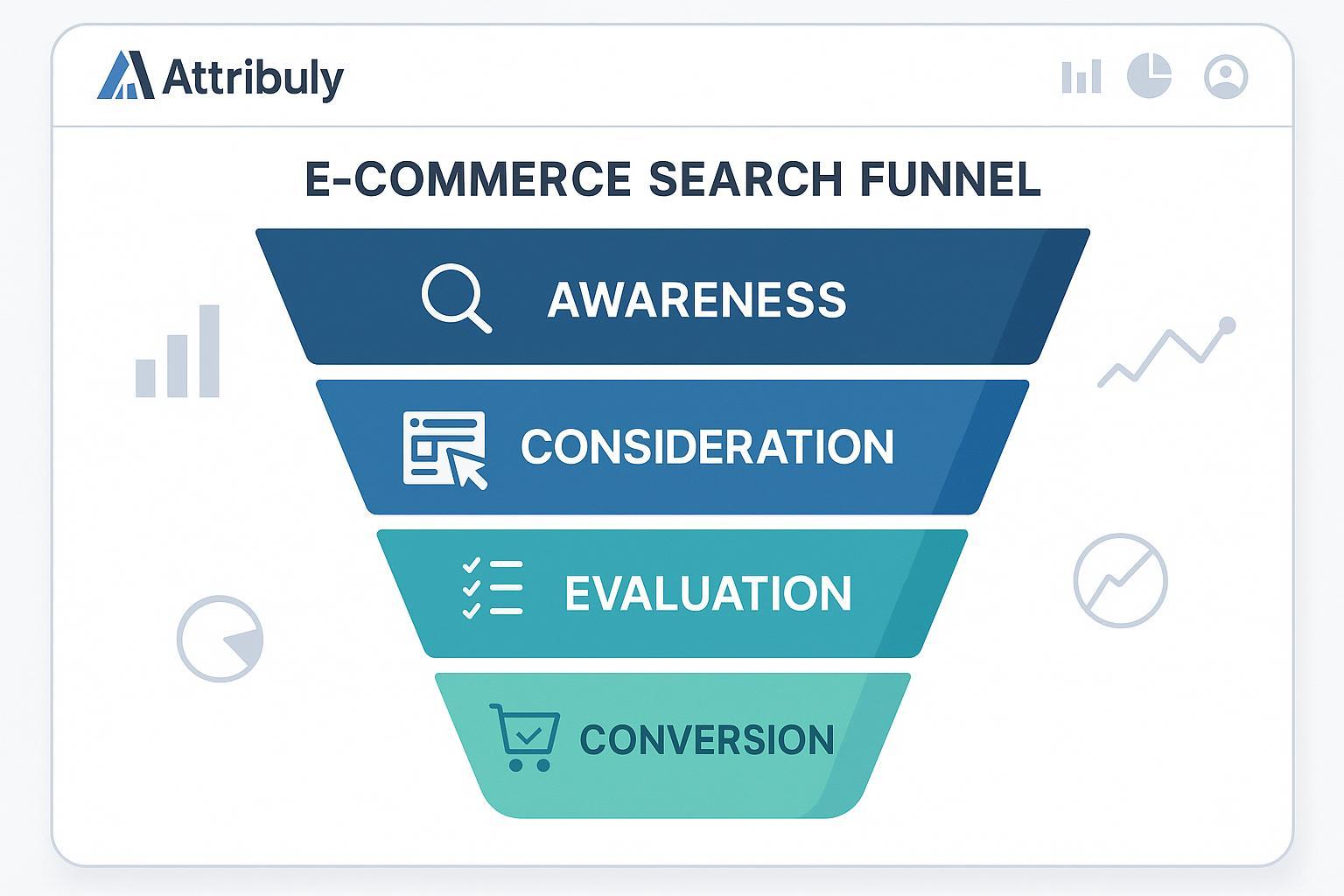Understanding the Search Funnel: A Key to Optimizing Your Marketing Strategy

What Is the Search Funnel?
The search funnel in e-commerce marketing analytics represents the path consumers follow—from their initial search intent (on search engines or within your shop) all the way to making a purchase. This funnel divides the customer journey into actionable stages, enabling brands to monitor, analyze, and optimize how users proceed or drop off before conversion. Unlike broader concepts such as the "sales funnel," which may stretch to include post-purchase and loyalty, the search funnel zeroes in on the journey from search to sale, making it a critical tool for channel attribution and campaign optimization (Shopify).
How the Search Funnel Differs from Sales and Site Search Funnels
- Search Funnel: Focuses on user progression from external or on-site search through buying journey.
- Sales Funnel: Encompasses a wider process, from lead generation through sale and retention.
- Site Search Funnel: Tracks how visitors use your website’s search feature; mostly for optimizing site UX (Cludo). Identifying which funnel applies ensures the right strategies and KPIs are in play.
The Core Stages of the E-commerce Search Funnel
1. Awareness
Users discover your product via organic search, ads, or content.
- KPI: Impressions, click-through rate (CTR)
2. Consideration
Users explore your offerings, compare options, or read reviews.
- KPI: Product views, time-on-page
3. Evaluation
Users add products to carts, interact with offers, or seek support.
- KPI: Add-to-cart rate, engagement metrics
4. Conversion
Users complete the purchase.
- KPI: Transactions, order value
Visualizing Drop-offs: At each stage, analytics platforms map where users leave the funnel. A drop-off spike in “Evaluation” may signal unclear features or poor retargeting. Measuring these KPIs pinpoints where interventions matter most (Google Analytics).
Measuring & Optimizing: Analytics Principles and Pitfalls
To get actionable insights, brands must:
- Use multi-touch attribution to track all channel interactions that move users through the funnel.
- Integrate cross-channel and server-side tracking for holistic data (vital for platforms like Shopify or Shopify Plus).
- Segment audiences by funnel position and identify drop-off triggers.
- Avoid generic analysis—tailor KPIs and optimization plans by funnel stage.
Attribuly in Action: Driving Funnel Success
Attribuly empowers e-commerce marketers by:
- Multi-touch attribution: Accurately credits sales to all touchpoints (Google, Meta, TikTok, email, etc.)
- Channel/source analytics: See which traffic sources move users across funnel stages.
- Server-side tracking: Capture and unify data even with browser restrictions.
- Segmentation & targeting: Identify cohorts stuck at “Consideration” or “Evaluation” and automate triggered campaigns.
- AI analytics assistant: Uncover hidden drop-off reasons and recommend optimizations.
Example: Suppose Attribuly reveals a high drop-off at “Evaluation.” It could automatically segment and retarget these visitors via email and ads, driving them towards conversion. This not only boosts ROI but uncovers otherwise hidden revenue streams.
Actionable Strategies to Maximize ROI
- Audit funnel stage KPIs regularly and match them to your campaign goals.
- Use attribution data to double down on high-performing channels.
- Trigger automations for users who leave at critical touchpoints.
- Visualize funnel health and make continuous, data-driven optimizations.
Further Reading & Related Concepts
- Multi-touch Attribution in E-commerce
- Conversion Rate Optimization
- Customer Journey Analytics
Conclusion & Next Steps
Understanding and optimizing your search funnel is essential for smart, ROI-focused e-commerce growth. Platforms like Attribuly offer the analytics muscle to turn funnel data into real-world revenue—making every touchpoint count. Ready to pinpoint your funnel’s leaks and boost your conversion rates? Explore Attribuly today!
